Drinking water - tap, filtered, or bottled - is important for healthy hydration and plays a vital role in people’s lives. Consumers choose bottled water for several reasons, including taste, quality, and convenience.
Bottled water is also an alternative to less-healthy sugary packaged beverages when consumers want to eliminate or moderate calories, caffeine, sugar, artificial flavors or colors, alcohol, and other ingredients from their diets.
More...
Water
chemical compound H20, is fundamental to all human life. Ancient cities were planned around it and it has been the cause of territorial wars. Yet it is only recently that we have come to take water for granted: a simple substance which flows out of the tap.
But our faith in this most basic human resource is now being shaken. The quality of Britain's tap water has, in fact, been causing concern since the early '80s.
Earlier this year, the European Court of Justice upheld a complaint that 5.3 million people in East Anglia and the Midlands were being supplied with drinking water containing excess nitrate. This chemical can cause 'blue baby syndrome' in infants, and its long-term effects are yet not fully appreciated.
And to make matters more complicated, those findings came only weeks after a television investigation of bottled water appeared to show that both mineral and spring waters contain higher levels of potentially harmful contaminants than tap water.
So, how do you choose between the two?
Just how far can we rely on bottled water?
Is it a safe substitute for common or garden tap water?
DESIGNER LABELS
UK sales of bottled water are now worth £300 million a year; 10 years ago, it was almost unknown. There's no doubt that the 'designer' drinks image of Perrier and other mineral waters boosted the sales.
But there is another side to this coin: a bottle of water costs about a thousand times as much as an equivalent quantity of tap water. Thus, the bottle boom suggests that there is little public faith in the reliability of tap water.
WHAT'S ON TAP
Most tap water comes from reservoirs and is pumped to filter beds where particles and microbes are removed, then it's chlorinated to kill any remaining bacteria. Legislation requires that the water is tested at all stages by local water authorities before it is supplied to homes.
But there have been enough incidents of contamination - by metals such as lead and aluminium, bacteria including salmonella and Cryptosporidium and chemicals such as nitrates - to suggest that these measures are not always effective.
Friends of the Earth (FoE) estimates that 10 million UK consumers are supplied with water that is contaminated beyond legal limits. The 1990 report of the Drinking Water Inspectorate found that 90 per cent of the UK's meets EC water purity standards.
But several water authorities are known to be unable to meet those standards and have sought exemption from them for 10 years. FoE wants an independent national drinking water authority established to monitor the water industry and get the issue cleaned up before 2002.
ON THE BOTTLE
Most bottled waters are 'groundwaters’ that set out as rain which then seeps through rocks to form underground pools. They bubble up to the surface through cracks in rocks and form springs, or they can be pumped artificially by drilling a borehole in the ground. Both still and sparkling forms are available.
WHAT A GAS
Many sparkling waters are still initially and are made effervescent with carbon dioxide gas (CO,). A few waters emerge from the ground naturally carbonated, but they are very difficult to bottle. So, the gas is usually removed and then put back once the water is in the bottle. Some varieties are already lightly carbonated, but these generally have extra gas added before they are bottled.
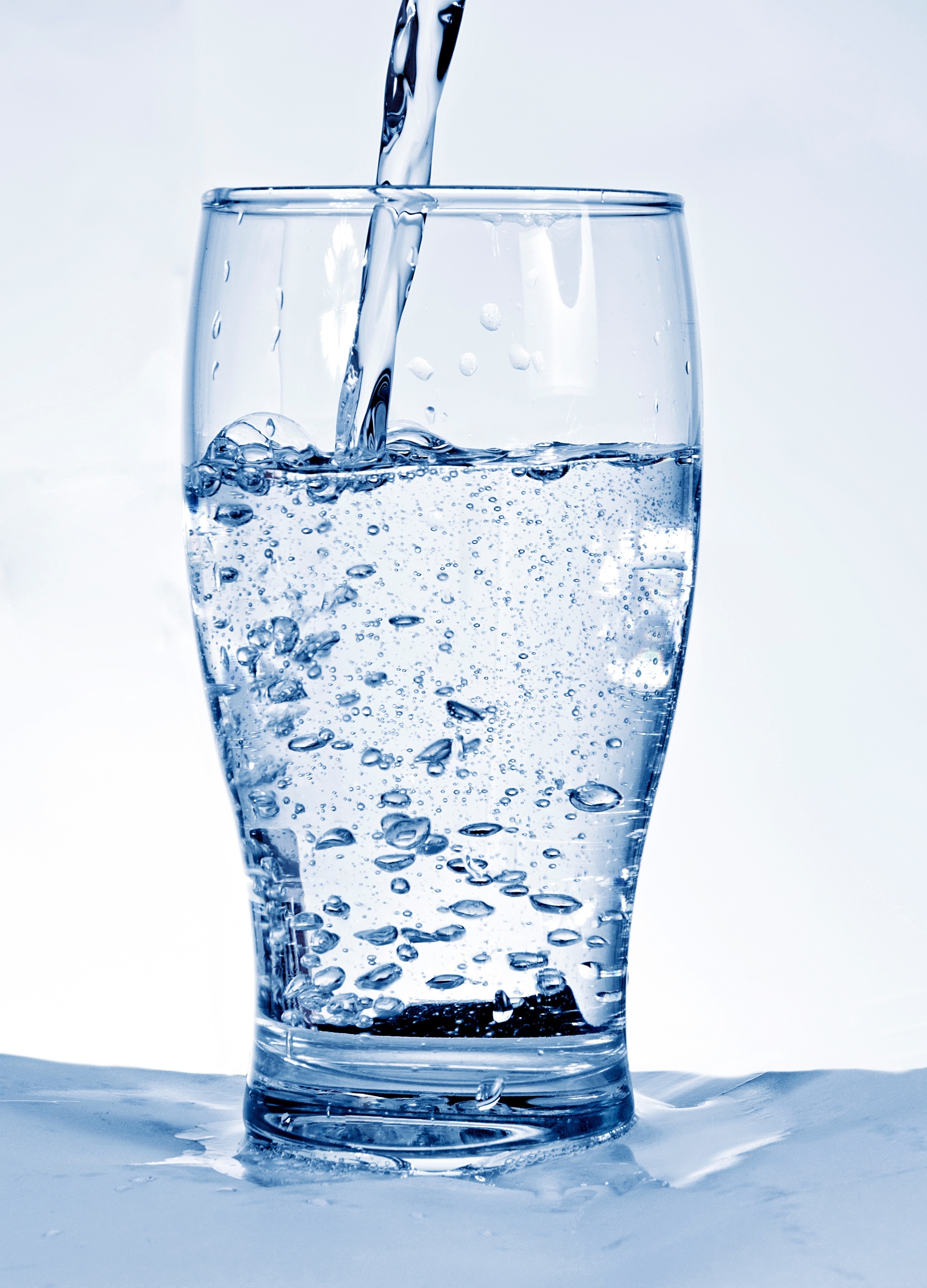
TELLING TIME
When doubts about tap water were first raised, bottled water was considered the safer option because the slow process of rain moving through rocks helped purify it. filtering out the organic material on which most bacteria need to live.
Mineral and spring waters, it was claimed, were therefore purer and much less prone to environmental pollution and pesticide residues.
Some sources of mineral water, such as the Buxton Spring in west Derbyshire, contain water that fell in the form of rain hundreds of years ago. Others come from shallow underground springs and are only a few weeks weeks old when bottled.
MINERAL MATTERS
Mineral waters have always been regarded as having curative and health giving properties, but contemporary science takes a different view. In order to function properly, the human body needs a good balance of minerals -such as sodium, calcium and potassium - but many scientists believe these should be kept at low levels in water.
Sodium, for example, is thought to raise blood pressure, which in turn may increase the risk of heart disease.
Mineral waters are the water that contains minerals. The minerals can be added artificially or can naturally be in the water.
Water that has collected in underground pools naturally erodes rock, dissolving the constituent minerals and salts. Each groundwater source therefore differs, depending on the character of the rock that it passes through.
However, just because it comes from below the ground, we cannot assume that spring water is a much safer bet than surface water which ends up in the tap.
OVER THE LIMIT
A recent Equinox programme on Channel 4 asked scientists in Wales to test a variety of bottled mineral waters. The experiment found that 17 of them exceeded the limit that is set for certain minerals in British tap water.
The same researchers-also discovered that 39 out of 51 bottled waters contained bacterial levels in excess of EC rulings for tap water. It is unlikely that those bacteria were naturally present.in the groundwater, so the results suggest that water is being contaminated when it is bottled.
While the main problem with tap water may be that the UK finds it hard to comply with the EC's standards and bottled waters are barely regulated in comparison.
Those labelled 'spring' can contain any water that has come up through the ground. But a 'mineral water' does have legal criteria to fulfil: it must be safe to drink, free of pollution and harmful bacteria, and bottled straight from the ground.
However, the regulations set limits for just 13 chemicals and bacteria, as opposed to the 57 applied to tap water.
There is also no legal obligation for bottlers to test on a daily basis. And the regulations only apply for the first 12 hours that elapse after bottling, even though it can be months before the water is consumed.
EC rulings on mineral waters are currently under review. Interested parties such as the Consumers' Association are calling for new rules to be applied to bottled waters - mineral and spring.
They want stricter controls on contamination and the compulsory labelling of all minerals present in significant amounts.
Many argue that the simplest course of action would be to make all bottled waters conform to the same standards as tap.

Spring Water
Spring water is often mistaken for being equal or interchangeable with purified water. However, spring water often contains many of the same impurities found in well or tap water.
In fact, since springs feed our rivers, there is a lot of spring water in our tap water! Spring water generally has the same TDS range as tap water.
Many spring water companies advertise their water as “100% pure—” but if it’s not purified, what does that mean?
The “pure” part actually refers to the source, not the water itself—in that 100% of that bottle’s contents came from an underground source (rather than surface water).
This clever wording leads many people to believe that spring water is just as clean as purified water.
Thanks to this crafty marketing, spring water often conjures up natural, pleasant imagery. In reality, most spring water is not actually bottled at the source, but rather, is pumped into large tanker trucks from the source to be transported to the bottling facility.
The water in those trucks must be chlorinated or ozonated at all times to protect against contamination. In this sense, spring water is hardly different from tap water, since it is largely treated the same way.
Once the water is at the bottling facility, it goes through a carbon filtration process to remove the chlorine. This process may separate spring from tap water, but nitrates, metals, and more are likely to remain.
Distilled Water
Distilled water is processed by boiling H2O out of its contaminants. Many of said contaminants include inorganic minerals or metals. Those impurities have a much higher boiling point than water’s boiling point of 212 degrees Fahrenheit.
So, the steam that results from the boiling is captured and cooled—and the water that results from the steam is what is classified as distilled water. Because many of the volatile compounds in water have a lower boiling point than water, they boil off first.
As a result, it is important to employ additional purification methods beyond distillation in order to have truly clean, pure water.
Filtered Water
Filtered water is what you are most likely to find in a grocery store. It is typically sourced from municipal tap water, which is then run through carbon filters to remove the chlorine (which improves the taste) and sometimes a micron filter as well.
After the filtering, it is ozonated and bottled. In essence, filtered water is quite similar to spring water. It comes from a “natural” source, goes through minimal filtration, and is then bottled and shipped to market.
Purified Water
The source of purified water isn’t what makes it the best choice on the market—it’s the purification methods that separate purified water from the rest of the pack.
Purified water goes through a process similar to what filtered water goes through, but with a few added steps like reverse osmosis, distillation, or deionization. The end result is far purer than filtered, spring, or tap water.
Alkaline water
The pH of water is neutral, around pH 7. Chemicals and gases can change this to make it more acidic or more alkaline.
 The pH of water is around 7, but some people say it may be more healthful to drink water that is alkaline.
The pH of water is around 7, but some people say it may be more healthful to drink water that is alkaline.
Rainwater's pH is slightly below neutral, because there is carbon dioxide from the air, and this increases acidity.
- Acidic substances have a pH of below 7.0, down to zero. The pH of vinegar is around pH 3, lemon juice around pH 2, and battery acid around pH 1.
- Alkaline substances have a pH up to 14. Baking soda's pH is between pH 8 and 9, and milk of magnesia is between pH 10 and 11.
Water can be high or low in pH, but if it is too high or too low, it can have adverse effects.
Alkaline water is somewhat controversial. Many health professionals say there isn’t enough research to support the many health claims made by users and sellers.
However, there are a few studies that suggest alkaline water might be helpful for certain conditions.
For example, a 2012 studyTrusted Source found that drinking naturally carbonated artesian-well alkaline water with a pH of 8.8 may help deactivate pepsin, the main enzyme that causes acid reflux.
Another study suggested that drinking alkaline ionized water may have benefits for people with high blood pressure, diabetes, and high cholesterol.
A more recent study IN 2019; included 100 people found a significant difference in whole blood viscosity after consuming high-pH water compared to regular water after a strenuous workout. Viscosity is the direct measurement of how efficiently blood flows through the vessels.
Water that is too alkaline has a bitter taste. It can cause deposits that encrust pipes and appliances. Highly acidic water may corrode metals or even dissolve them.
TAKING ACTION
The issue of quality is something of a minefield, in which all the decisive factors are outside the control of individual consumers.
There are, however, some rules that we can observe.
- Buy bottled water in glass rather than plastic bottles -some scientists think that bacteria multiply faster in plastic: besides, glass is easier to recycle.
- Refrigerate bottled water after opening and finish it as soon as possible, preferably within one day.
- If you use bottled water regularly, consider buying a filter - it will almost certainly be better value in the long term.
If you already use a filter, make sure you change the filter cartridges frequently and according to manufacturers' instructions.
Always store filtered water in the fridge.
If you still have lead plumbing in your home, apply for a grant from the local council to have it replaced.
When using water to make up babies' feed, boil it first -whether it's tap or bottled. Check that any mineral water given to a baby is low in sodium. (Compare labelling information with the maximum limits laid down in the Water Act 1989. available from HMSO)
You can find out if your tap water complies with the legal standards. Either go and look at the public register held by your water supplier or get the information sent through the post.
Ask for details of the maximum permitted levels of various substances, so that you can make your own comparison.
Moreover, the water from public water systems is often compromised after emergency situations or natural disasters (e.g., hurricanes, floods, tornados, fires, or boil alerts). During these times, bottled water is a necessary and reliable alternative to deliver clean, safe drinking water.
If you cannot understand the information, ask your local Environmental Health Officer or Friends of the Earth group for help. (For a FoE briefing sheet on drinking water, send an sae to: FoE, 26-28 Underwood Street, London N1 7JQ.
Water Brands
Voss Artesian Water
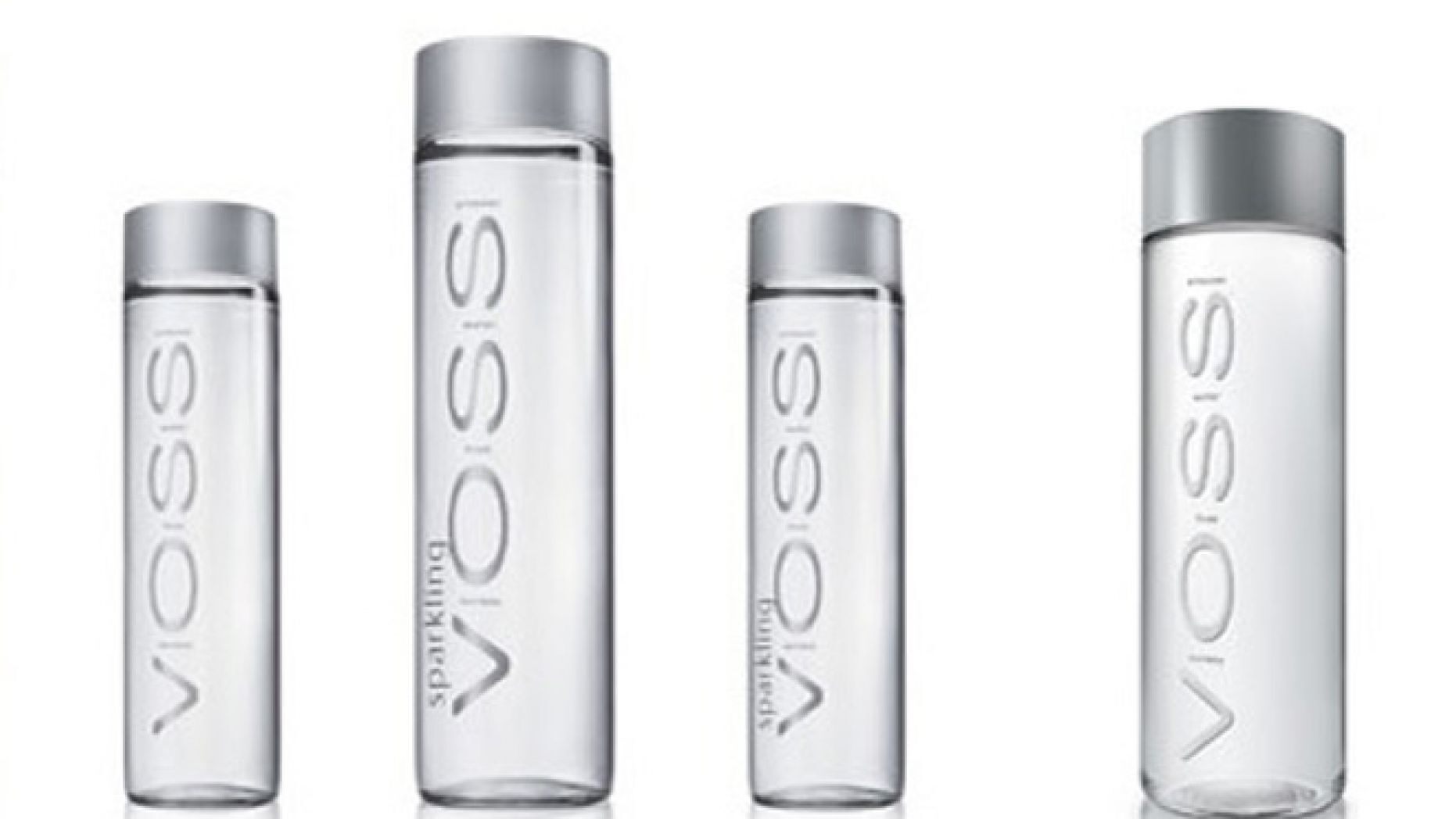
Two Norwegian entrepreneurs created Voss, a classy, designer-savvy tube of water from the crisp, frigid aquifers of their Nordic homeland. Shielded for hundreds of years from pollutants by thick layers of rock and sand, Voss water is bottled in Southern Norway, “naturally unfiltered” and served both still and sparkling.
But its rugged purity is not Voss’ only selling point. The company’s designers painstakingly developed the bottle’s look and feel to reflect a brand that embodies both health and high fashion.
Voss first became available mostly in upscale hotels and in health spas in Europe and in the United States but has since seen much wider distribution in gourmet food and retail stores on both continents.
Saint Geron Mineral Water

Saint Géron, known as "the queen of mineral waters," stems from an ancient spring in the Auvergne region of France. The light, sparkling mineral water in a bottle of Saint Géron is the product of an 1,100-year filtration process.
This results in the water being cleansed of all bacteria and nitrates, which show up at less than .1 milligrams per liter. Unusually rich in calcium and magnesium, Saint Géron has long been used as a treatment for digestive problems, diabetes, anemia and even gout.
Although the water was not bottled until the nineteenth century, the Romans patronized the spring long before — ancient coins from the Gallo-roman period (50 BC–486 AD) have been found scattered all around the source.
The water comes in a modern, elegant glass bottle created by painter and designer Alberto Bali.
Hildon Natural Mineral Water
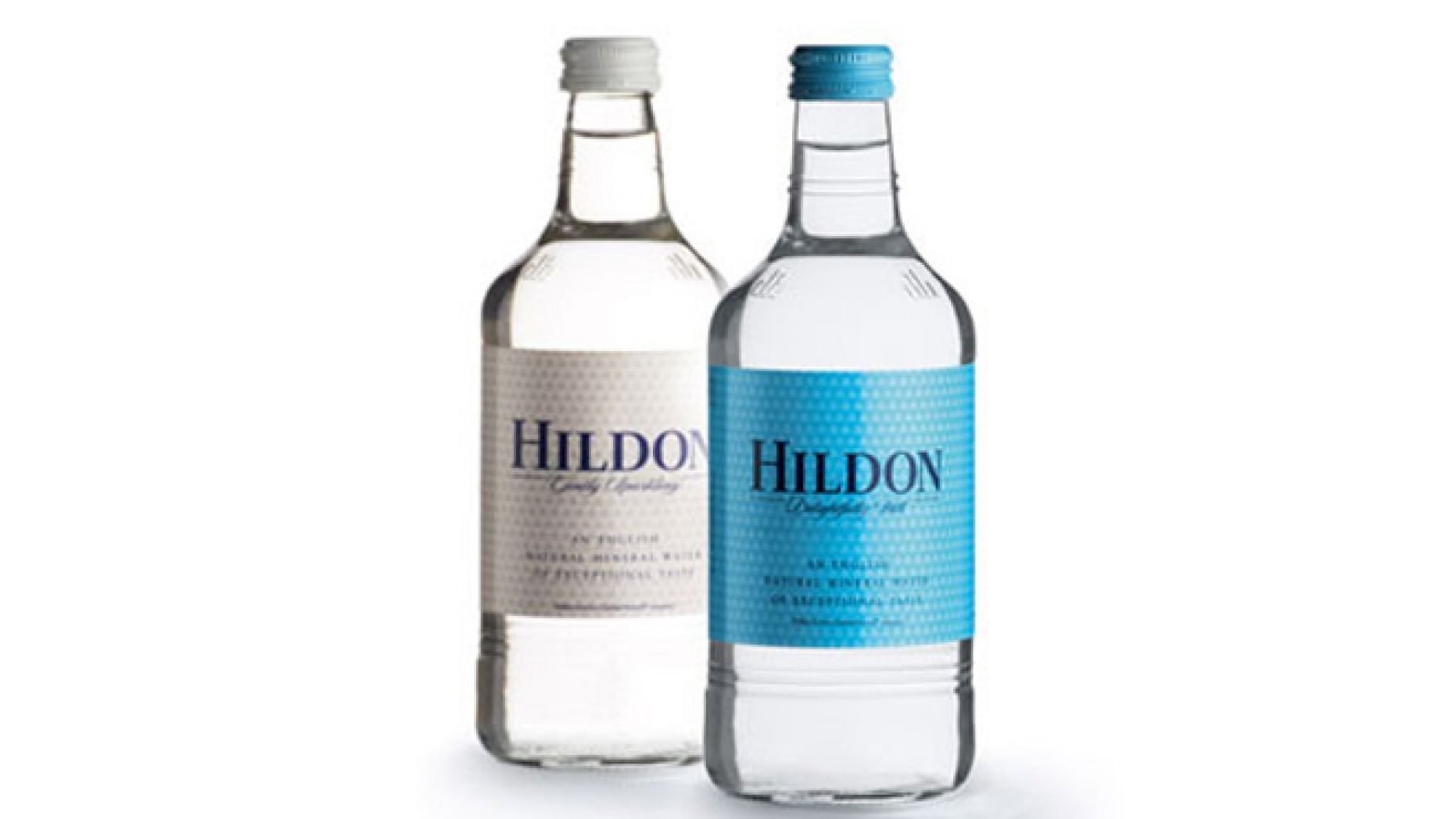
One of the UK’s most prestigious bottled waters, Hildon Natural Mineral Water is served at the House of Commons and the Royal Opera House (and is rumored to be the water of choice at Buckingham Palace).
Hildon begins as rainfall, which percolates through the chalk hills of the Hampshire countryside. After a period of 50 years the water emerges at an underground aquifer beneath the nineteenth-century Hildon Estate.
The chalk acts as a unique natural filtration system, protecting the water from pollution and endowing it with high levels of calcium. Once it reaches the source it is immediately bottled without chemical treatment. Naturally low in sodium, the water is prized for its purity and well-balanced taste.
Hildon, which produces both still and sparkling varieties, was the first company in the world to sell a natural mineral water with a carbonation level below 2.9.
This low level of carbonation makes their "Gently Sparkling" water ideal for sipping alongside fine wines and subtly flavored dishes, which risk being overwhelmed by more robust bubbles.
Evian Natural Spring Water
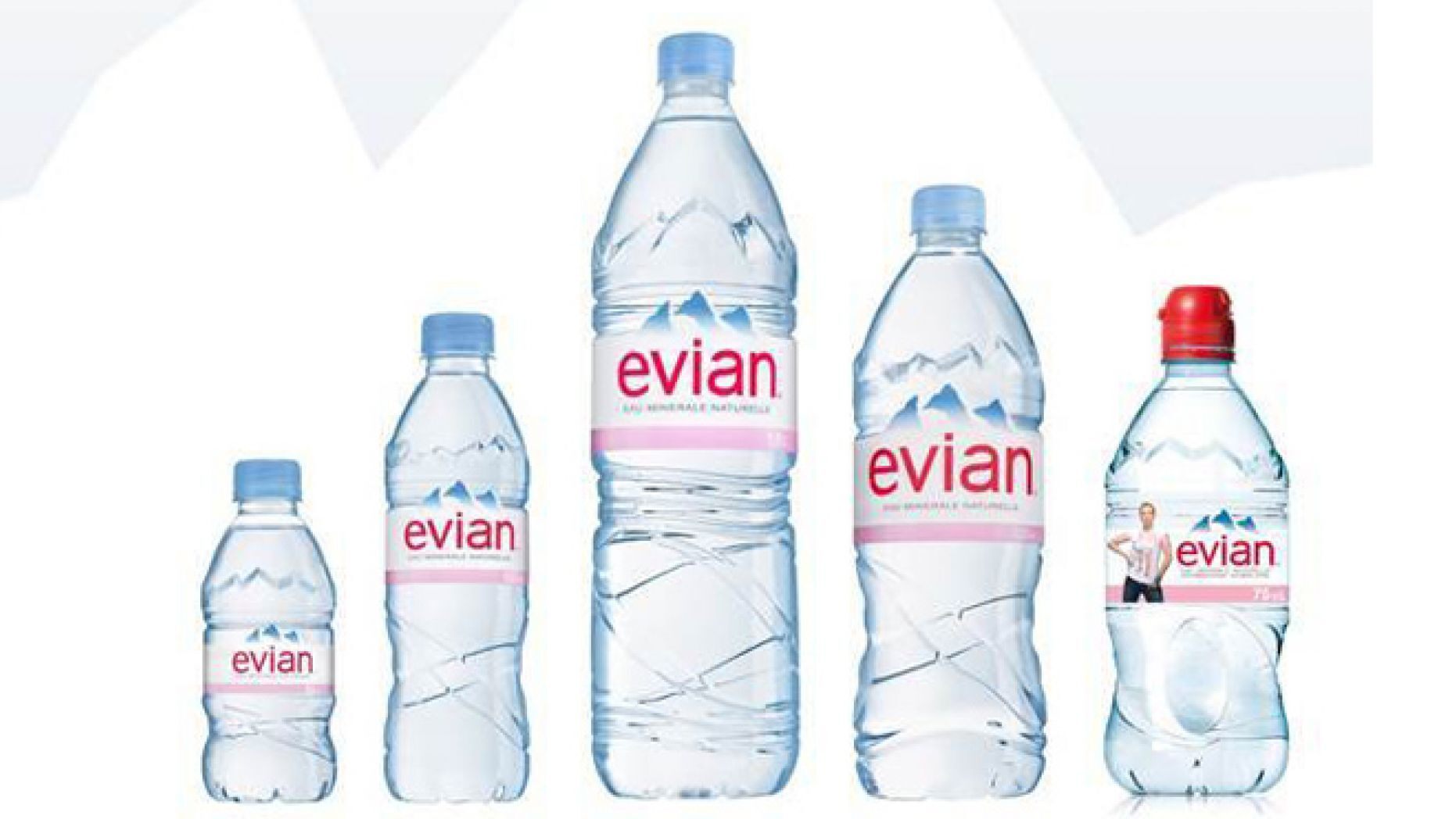
Discovered by a French nobleman during the French Revolution, Evian stems from a source that was thought to hold curative and restorative powers from the start. Evian begins as water that emerges from the Source Cache in France in a mountain tunnel at 52.88 degrees Fahrenheit.
The source is fed from the melted snow and rain that filters through glacial sand from the Vinzier Plateau over a period of fifteen years. The glacial sand is surrounded by clay, which protects the water from pollution and gives it its mineral composition and taste.
The water is bottled at a nearby bottling plant, which is highly automated and exceptionally hygienic.
Fiji Natural Artesian Water
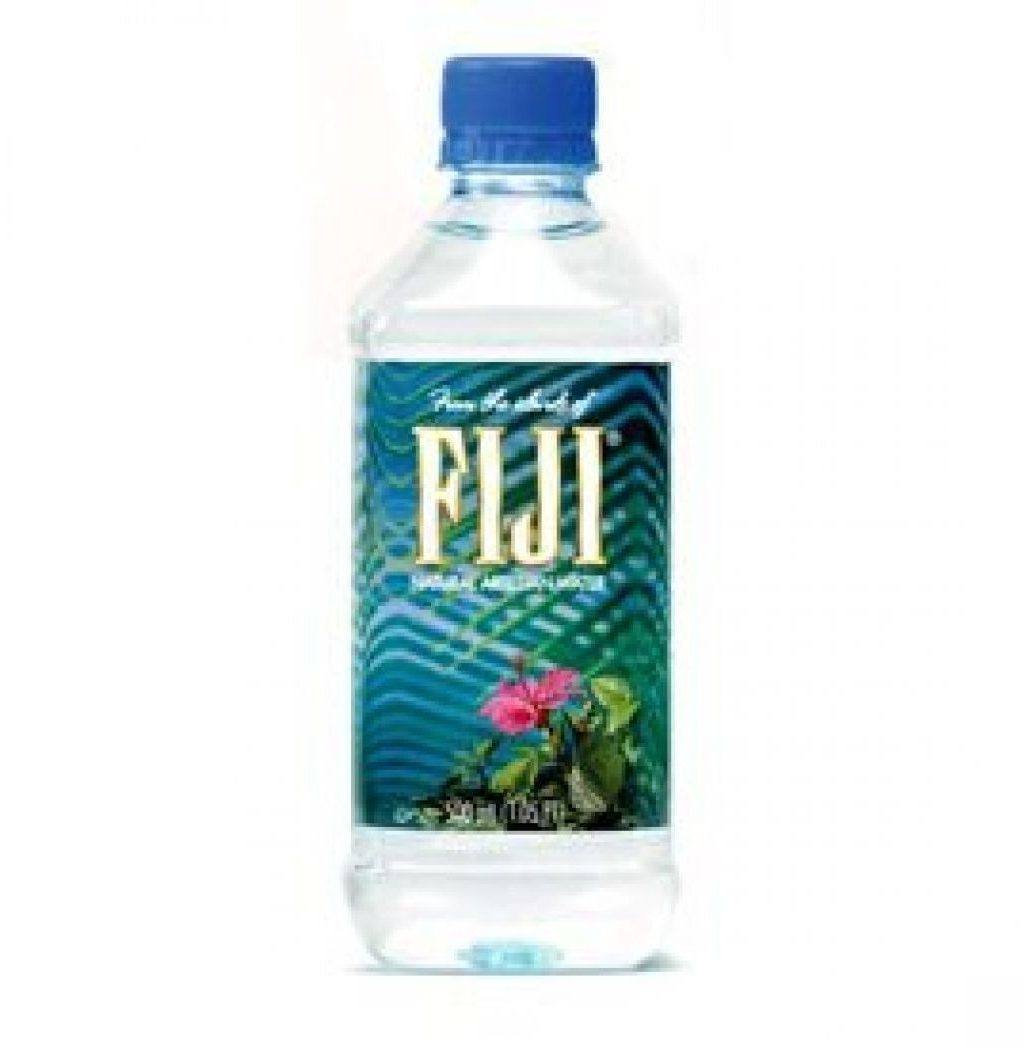
FIJI Water, natural artesian water, began being bottled in 1996 at the source in the Yaqara Valley of Viti Levu, one of Fiji’s two principal islands, and is now the number one imported bottled water in the United States.
FIJI’s natural artesian origins provide the water with a unique mineral profile, including its high silica concentration. FIJI Water is known for its iconic square bottle and its signature soft, smooth taste, which comes from the natural silica content and trace amounts of calcium and magnesium.
As part of that strict commitment to quality, no human hands are allowed to touch it. Perfectly protected from outside air and external elements, FIJI Water is untouched until you unscrew the cap.
Gerolsteiner Mineral Water
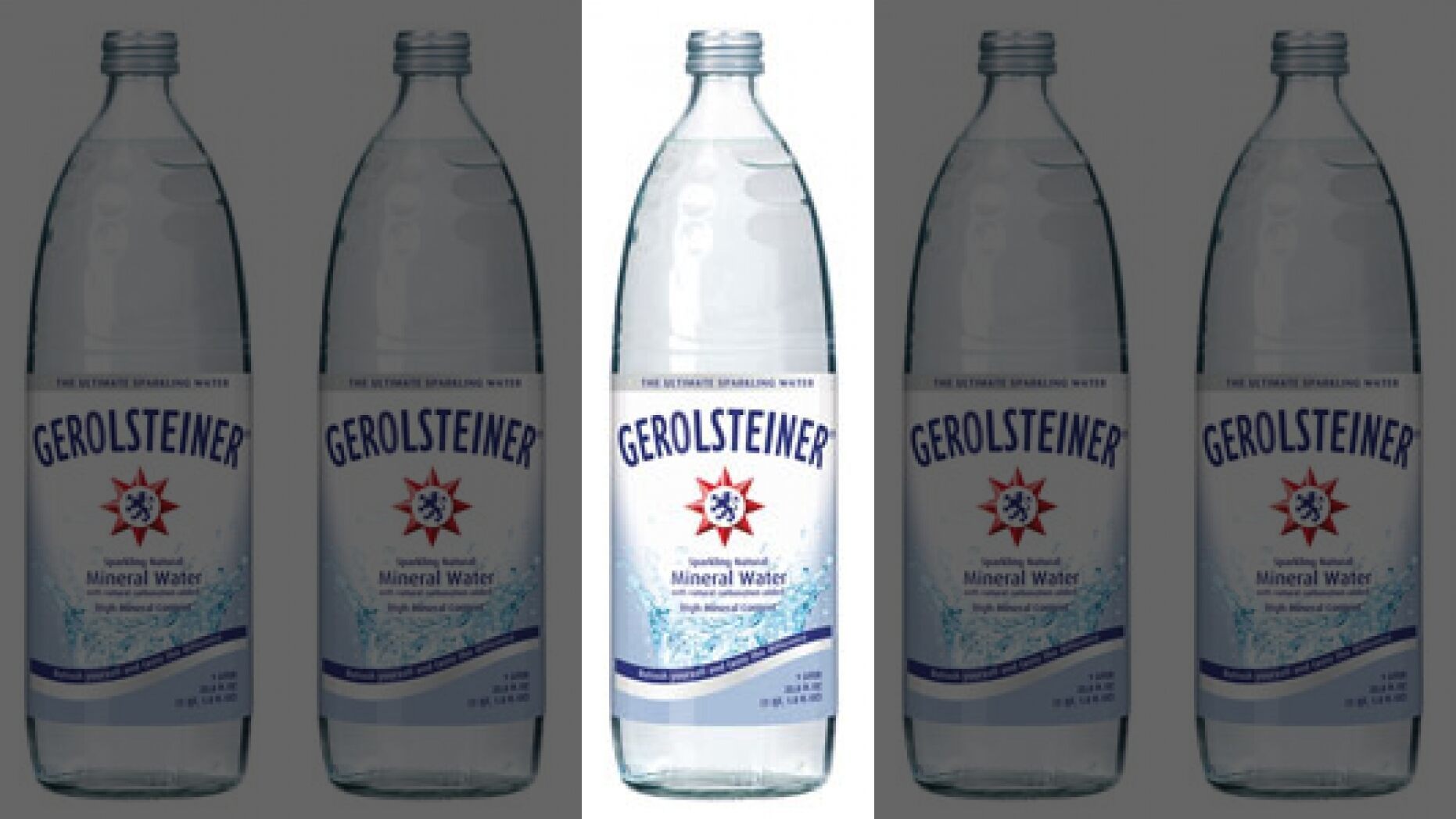
Founded in 1888, Gerolsteiner Sparkling Mineral Water is the number one water export in Germany. In the German style of stringent purity and cleanliness, Gerolsteiner’s production follows strict purity protocols.
Originating in springs from the area of Volcanic Eifel, Gerolsteiner flows from ancient, rocky volcanic reservoirs 200 feet beneath the earth’s surface. Minerals and carbonic acid leach into the water as it percolates up through the volcanic rocks, giving Gerolsteiner its exceptionally high amount of calcium, bicarbonate and magnesium.
Gerolsteiner is a great source of essential nutrients that our bodies need daily and its natural carbonation gives Gerolsteiner its refreshing, neutral taste.
Ferrarelle Naturally Sparkling Mineral Water
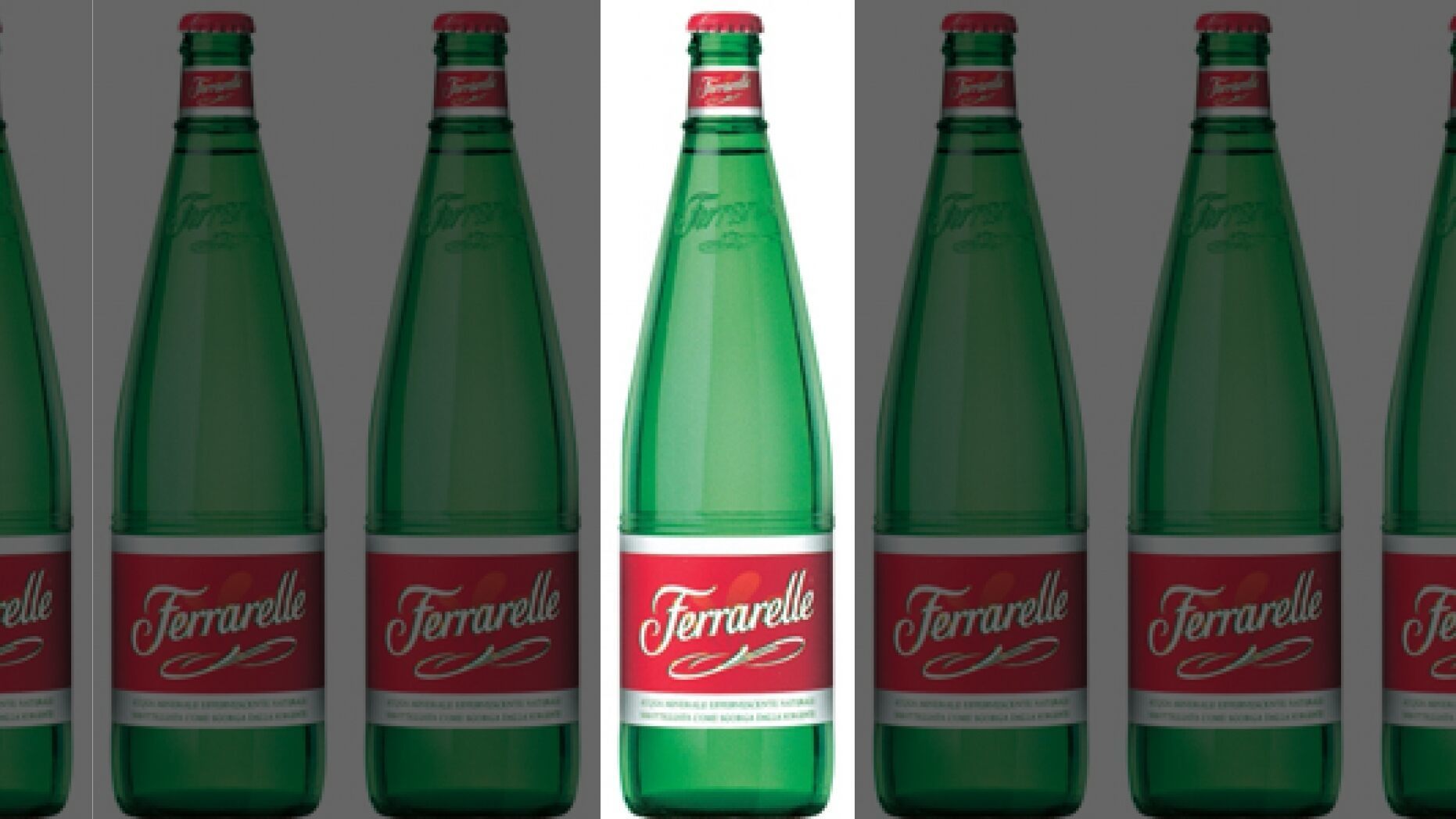
Relatively unknown in America, Italy's number one brand of sparkling mineral water was established in 1893, though Italians have been drinking from its source for hundreds of years.
This naturally effervescent water is bottled directly at a spring located in the protected Sorgeto di Riardo Park near the extinct Roccamonfina volcano in Italy's Campania region. Ferrarelle is extremely mindful of the quality of its products, testing them more than 600 times each day. Care is also taken to safeguard the habitat surrounding the spring, and the company's bottling plants are powered by solar energy.
Ferrarelle water, both sparkling and still, is bottled in glass containers rather than plastic, which protects its taste and purity and lessens the impact on the environment. Ferrarelle water begins as rainfall, which trickles through layers of rock in the ground, soaking up valuable minerals such as calcium, potassium, magnesium and fluoride.
Nevertheless, it has no mineral taste and no unpleasant saltiness. It does have the thirst-quenching, pure taste of simple water, with a pleasant amount of fizziness.
Perrier Mineral Water
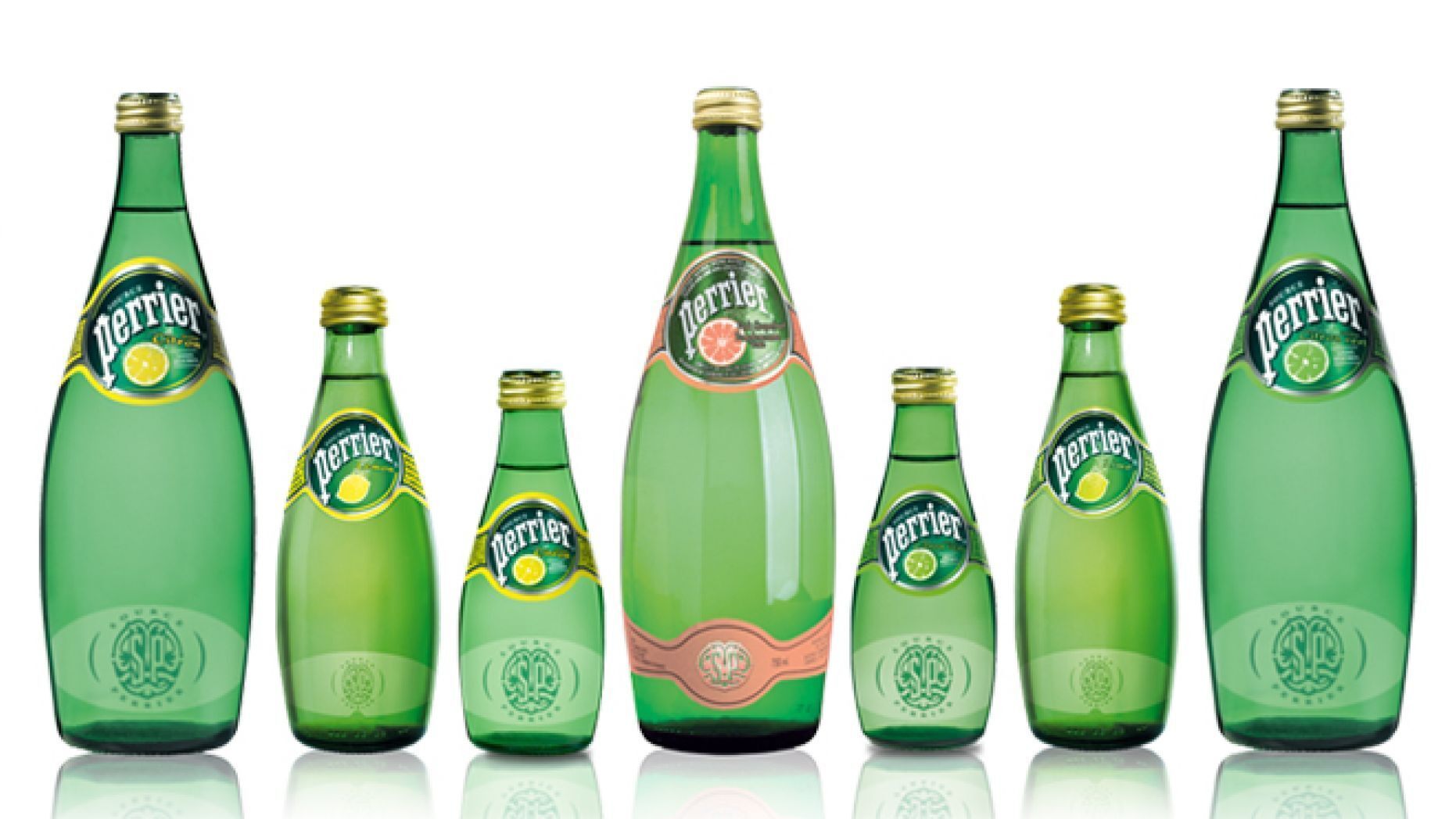
Perrier is a naturally sparkling mineral water sourced from a spring in Vergèze, France. Originally called Les Bouillens, the spring has been used as a spa resort since Roman times. The distinctive bottle shape is said to have been inspired by Indian clubs used for exercise by spring owner Sir Saint-John Harmsworth.
The water and carbonation are captured separately and recombined in the bottling process to preserve the natural sparkling flavor of the original water from the spring.
Today, Perrier is marketed as a healthy alternative to soda drinks and cocktails and is available in a variety of flavors, ranging from pink grapefruit to lemon and lime.
Mountain Valley Spring Water
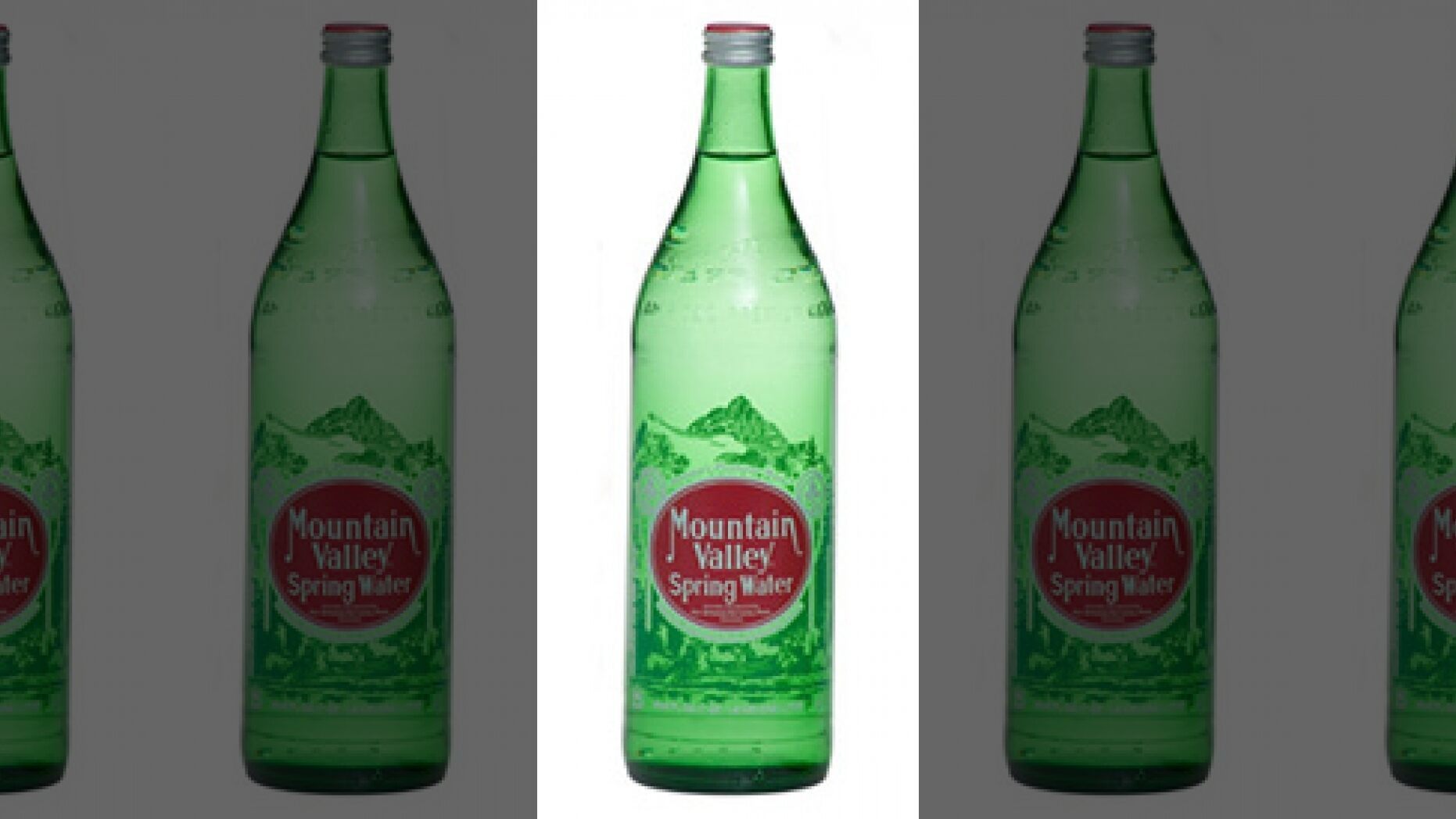
Since 1871, Mountain Valley Spring Water has been praised by U.S. presidents, world-class athletes and even Hollywood stars for its refreshing taste and potent health benefits.
Bottled at its source in the hills between the Glazypeau and Cedar Mountains in Arkansas, Mountain Valley Spring Water has a unique mineral composition that is believed to have medicinal properties that can help alleviate chronic disorders.
Elvis Presley, John Lennon and Joe Lewis were firm believers in the restorative powers of this water, and they weren't the only ones. Thirteen presidents (from Coolidge to Clinton) had Mountain Valley regularly served to their guests while they were in office, and the water is currently being served in the United States Senate.
In fact, President Dwight Eisenhower drank the water medicinally following a heart attack. It was also served to a number of famous racehorses, including Nashua, Sunday Silence and the great Secretariat. This sparkling water is light and clean, with a delicate pH balance for premier taste.
Volvic Natural Spring Water
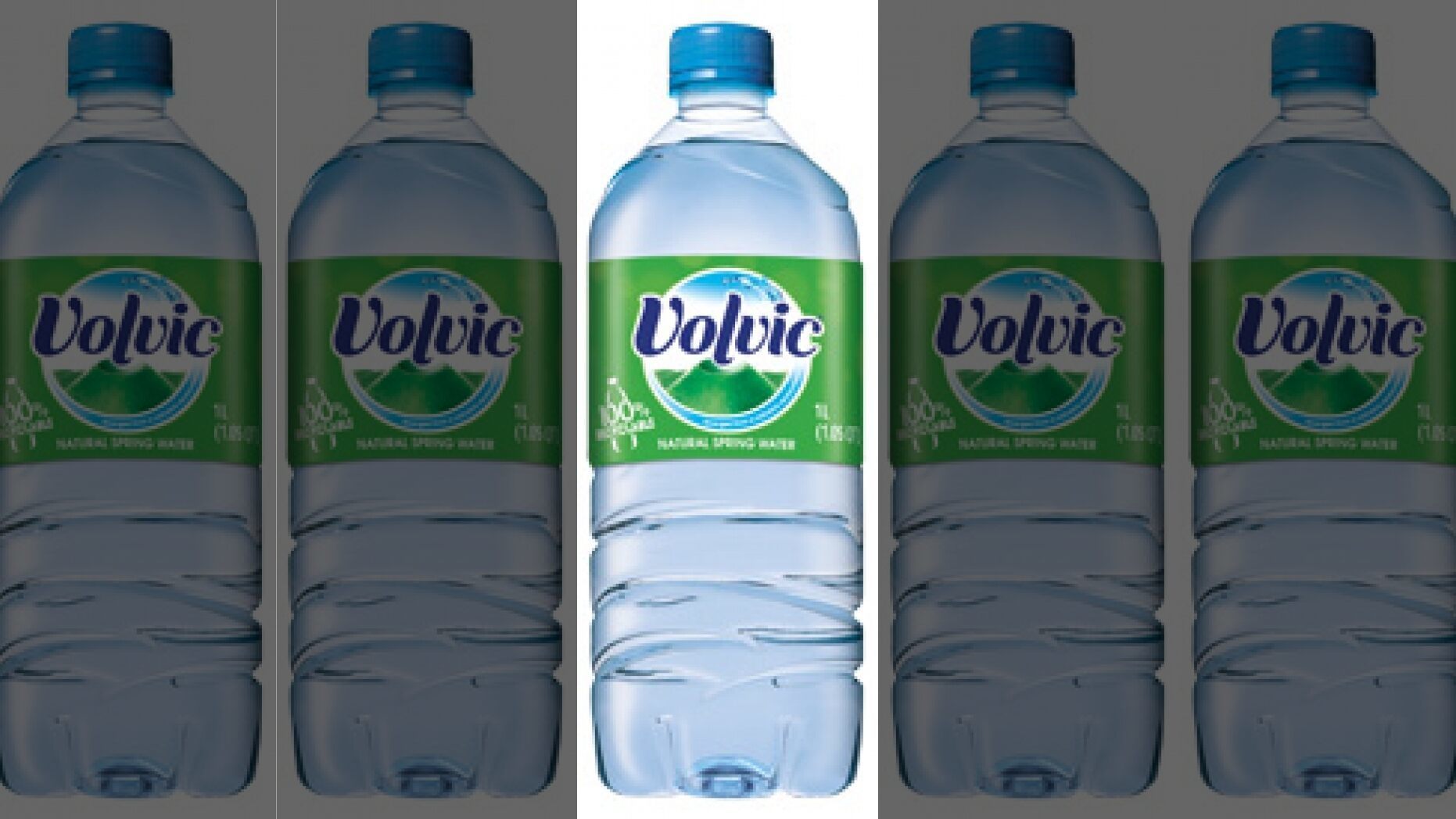
Volvic is bottled exclusively at its unique source in France and available in more than 60 countries. The basin supplying the Volvic spring source is located in the Regional Park of the Old Auvergne Volcanoes, a volcanic region that has been dormant for 10,000 years.
The name Volvic refers to the town as well as a type of gray volcanic rock. The source of the water, the Clairvic Spring, was discovered in 1927.
In 1965, the French Ministry of Health authorized the bottling of Volvic water. Volvic emerges year-round from its protected source at the constant temperature of 8.8 degrees Celsius.
Brecon Carreg Bottled Mineral Water
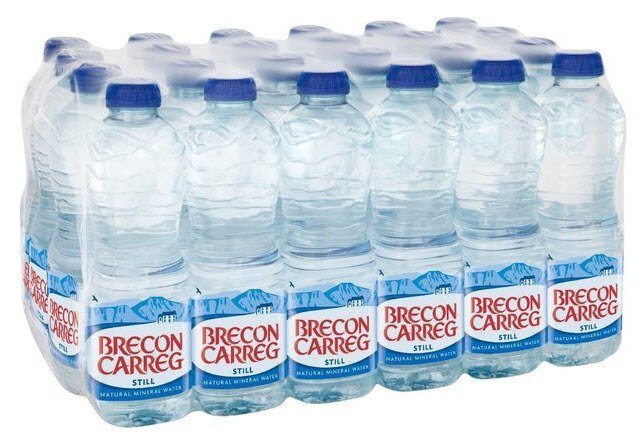
It begins as rain falling on the hills and valleys of the Brecon Beacons, then streams, filters and flows through layer after layer of dense limestone strata and other ancient rocks for many, many years.
Not surprisingly, during the course of this long and colourful excursion, the water gains traces of lots of different minerals, which are present in the various rocks it is travelling through on its journey to the surface. The minerals acquired in this way, are what gives our bottled mineral water its unique natural taste and make-up.
Another factor in our success and popularity is that the excellent balance of minerals in our water also gives it a reassuringly low sodium content. In fact our water has the lowest sodium content of all major UK mineral water brands, which means if you’re concerned about too much salt in your diet then this is the mineral water for you.

